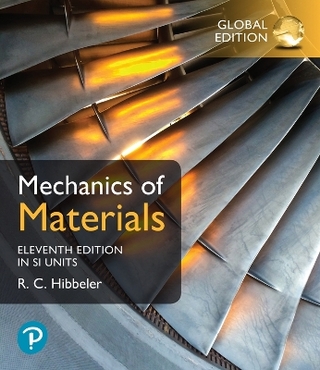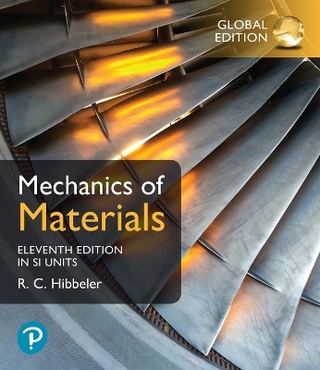
Bio–Ceramics with Clinical Applications
John Wiley & Sons Inc (Hersteller)
978-1-118-40674-8 (ISBN)
- Keine Verlagsinformationen verfügbar
- Artikel merken
Providing a structured account of this highly active area of research, the book reviews the clinical applications in bone tissue engineering, bone regeneration, joint replacement, drug-delivery systems and biomimetism, this book is an ideal resource for materials scientists and engineers, as well as for clinicians.
From the contents:
Part I Introduction
1. Bioceramics
2. Biomimetics
Part II Materials
3. Calcium Phosphate Bioceramics
4. Silica-based Ceramics: Glasses
5. Silica-based Ceramics: Mesoporous Silica
6. Alumina, Zirconia, and Other Non-oxide Inert Bioceramics
7. Carbon-based Materials in Biomedicine
Part III Material Shaping
8. Cements
9. Bioceramic Coatings for Medical Implants
10. Scaffold Designing
Part IV Research on Future Ceramics
11. Bone Biology and Regeneration
12. Ceramics for Drug Delivery
13. Ceramics for Gene Transfection
14. Ceramic Nanoparticles for Cancer Treatment
Maria Vallet-Regi is full Professor of Inorganic Chemistry and Head of the Department of Inorganic and Bioinorganic Chemistry of the Faculty of Pharmacy at Universidad Complutense de Madrid, Spain. Professor Vallet-Regi has written over 500 articles and more than 20 books. She is the most cited Spanish scientist in the field of Materials Science in this last decade, according to ISI Web of Knowledge. She has presented her research around the world at over 300 international conferences Professor Vallet-Regi has received many awards including: the French-Spanish award of the year 2000 from the Societe Francaise de Chimie; the Inorganic Chemistry award 2008 from the Spanish Royal Society of Chemistry; the 2008 Spanish National Research Award "Leonardo Torres Quevedo" in the field of Engineering and Spanish Royal Society of Chemistry (RSEQ) research award 2011 (RSEQ medal).
List of Contributors xiii Preface xv Part I Introduction 1 1. Bioceramics 3 Maria Vallet-Regi 1.1 Introduction 3 1.2 Reactivity of the Bioceramics 4 1.3 First, Second, and Third Generations of Bioceramics 6 1.4 Multidisciplinary Field 7 1.5 Solutions for Bone Repairing 8 1.6 Biomedical Engineering 13 Recommended Reading 15 2. Biomimetics 17 Maria Vallet-Regi 2.1 Biomimetics 17 2.2 Formation of Hard Tissues 18 2.3 Biominerals versus Biomaterials 19 Recommended Reading 22 Part II Materials 23 3. Calcium Phosphate Bioceramics 25 Daniel Arcos 3.1 History of Calcium Phosphate Biomaterials 25 3.2 Generalities of Calcium Phosphates 26 3.3 In vivo Response of Calcium Phosphate Bioceramics 28 3.4 Calcium Hydroxyapatite-Based Bioceramics 30 3.4.1 Stoichiometric Hydroxyapatite (HA) 31 3.4.2 Calcium Deficient Hydroxyapatites (CDHA) 37 3.4.3 Carbonated Hydroxyapatites (CHA) 39 3.4.4 Silicon-Substituted Hydroxyapatite (Si-HA) 40 3.4.5 Hydroxyapatites of Natural Origin 45 3.5 Tricalcium Phosphate-Based Bioceramics 50 3.5.1 -Tricalcium Phosphate ( -TCP) 50 3.5.2 -Tricalcium Phosphate ( -TCP) 53 3.6 Biphasic Calcium Phosphates (BCP) 55 3.6.1 Chemical and Structural Properties 55 3.6.2 Preparation Methods 56 3.6.3 Clinical Applications 56 3.7 Calcium Phosphate Nanoparticles 57 3.7.1 General Properties and Scope of Calcium Phosphate Nanoparticles 57 3.7.2 Preparation Methods of CaP Nanoparticles 58 3.7.3 Clinical Applications 60 3.8 Calcium Phosphate Advanced Biomaterials 60 3.8.1 Scaffolds for in situ Bone Regeneration and Tissue Engineering 60 3.8.2 Drug Delivery Systems 62 References 65 4. Silica-based Ceramics: Glasses 73 Antonio J. Salinas 4.1 Introduction 73 4.1.1 What Is a Glass? 73 4.1.2 Properties of Glasses 75 4.1.3 Structure of Glasses 75 4.1.4 Synthesis of Glasses 76 4.2 Glasses as Biomaterials 78 4.2.1 First Bioactive Glasses (BGs): Melt-Prepared Glasses (MPGs) 79 4.2.2 Other Bioactive MPGs 80 4.2.3 Bioactivity Index and Network Connectivity 80 4.2.4 Mechanism of Bioactivity 81 4.3 Increasing the Bioactivity of Glasses: New Methods of Synthesis 82 4.3.1 Sol--Gel Glasses (SGGs) 82 4.3.2 Composition, Texture, and Bioactivity of SSGs 84 4.3.3 Biocompatibility of SGGs 86 4.3.4 SGGs as Bioactivity Accelerators in Biphasic Materials 86 4.3.5 Template Glasses (TGs) Bioactive Glasses with Ordered Mesoporosity 88 4.3.6 Atomic Length Scale in BGs: How the Local Structure Affects Bioactivity 91 4.3.7 New Reformulation of Hench's Mechanism for TGs 93 4.3.8 Including Therapeutic Inorganic Ions in the Glass Composition 94 4.4 Strengthening and Adding New Capabilities to Bioactive Glasses 95 4.4.1 Glass Ceramics (GCs) 95 4.4.2 Composites Containing Bioactive Glasses 97 4.4.3 Sol--Gel Organic--Inorganic Hybrids (O-IHs) 98 4.5 Non-silicate Glasses 99 4.5.1 Phosphate Glasses 99 4.5.2 Borate Glasses 100 4.6 Clinical Applications of Glasses 101 4.6.1 Bioactive Silica Glasses 101 4.6.2 Inert Silica Glasses 106 4.6.3 Phosphate Glasses 106 4.6.4 Borate Glasses 107 Recommended Reading 107 5. Silica-based Ceramics: Mesoporous Silica 109 Montserrat Colilla 5.1 Introduction 109 5.2 Discovery of Ordered Mesoporous Silicas 110 5.3 Synthesis of Ordered Mesoporous Silicas 111 5.3.1 Hydrothermal Synthesis 112 5.3.2 Evaporation-Induced Self-Assembly (EISA) Method 119 5.4 Mechanisms of Mesostructure Formation 119 5.5 Tuning the Structural Properties of Mesoporous Silicas 122 5.5.1 Micellar Mesostructure 123 5.5.2 Type of Mesoporous Structure 128 5.5.3 Mesopore Size 131 5.6 Structural Characterization of Mesoporous Silicas 132 5.7 Synthesis of Spherical Mesoporous Silica Nanoparticles 135 5.7.1 Aerosol-Assisted Synthesis 136 5.7.2 Modified Stober Method 137 5.8 Organic Functionalization of Ordered Mesoporous Silicas 138 5.8.1 Post-synthesis Functionalization ("Grafting") 139 5.8.2 Co-condensation ("One-Pot" Synthesis) 140 5.8.3 Periodic Mesoporous Organosilicas 141 References 141 6. Alumina, Zirconia, and Other Non-oxide Inert Bioceramics 153 Juan Pena Lopez 6.1 A Perspective on the Clinical Application of Alumina and Zirconia 153 6.1.1 Alumina 155 6.1.2 Zirconia 158 6.2 Novel Strategies Based on Alumina and Zirconia Ceramics 160 6.2.1 From Alumina Toughened Zirconia to Alumina Matrix Composite 160 6.2.2 Introduction of Different Species in Zirconia 161 6.2.3 Improvement of Surface Adhesion 162 6.3 Non-oxidized Ceramics 163 6.3.1 Silicon Nitride (Si3N4) 163 6.3.2 Silicon Carbide (SiC) 164 References 164 7. Carbon-based Materials in Biomedicine 175 Mercedes Vila 7.1 Introduction 175 7.2 Carbon Allotropes 175 7.2.1 Pyrolytic Carbon 176 7.2.2 Carbon Fibers 177 7.2.3 Fullerenes 177 7.2.4 Carbon Nanotubes 179 7.2.5 Graphene 181 7.2.6 Diamond and Amorphous Carbon 184 7.3 Carbon Compounds 186 7.3.1 Silicon Carbide 186 7.3.2 Boron Carbide 187 7.3.3 Tungsten Carbide 188 References 188 Part III Material Shaping 193 8. Cements 195 Oscar Castano and Josep A. Planell Abbreviations 195 Glossary 196 8.1 Introduction 197 8.1.1 Brief History 197 8.1.2 Definition and Chemistry 199 8.1.3 Description of the Different CaP Cements 200 8.1.4 State of the Art 201 8.2 Calcium Phosphate Cements 206 8.2.1 Types 206 8.2.2 Mechanisms 206 8.2.3 Relevant Experimental Variables 207 8.2.4 Material Characterization 211 8.2.5 Reaction Evolution of Cements 220 8.2.6 Additives and Strategies to Enhance Properties 222 8.2.7 Biological Characterization and Bioactive Behavior 224 8.3 Applications 229 8.3.1 Bone Defect Repair 229 8.3.2 Drug Delivery Systems 232 8.4 Future Trends 232 8.5 Conclusions 233 References 234 9. Bioceramic Coatings for Medical Implants 249 M. Victoria Cabanas 9.1 Introduction 249 9.2 Methods to Modify the Surface of an Implant 250 9.2.1 Deposited Coatings 251 9.2.2 Conversion Coatings 257 9.3 Bioactive Ceramic Coatings 258 9.3.1 Clinical Applications 259 9.3.2 Calcium Phosphates-Based Coatings 260 9.3.3 Silica-based Coatings: Glass and Glass-Ceramics 268 9.3.4 Bioactive Ceramic Layer Formation on a Metallic Substrate 270 9.4 Bioinert Ceramic Coatings 272 9.4.1 Titanium Nitride and Zirconia Coatings 273 9.4.2 Carbon-based Coatings 275 References 279 10. Scaffold Designing 291 Isabel Izquierdo-Barba 10.1 Introduction 291 10.2 Essential Requirements for Bone Tissue Engineering Scaffolds 293 10.3 Scaffold Processing Techniques 296 10.3.1 Foam Scaffolds 297 10.3.2 Rapid Prototyping Scaffolds 301 10.3.3 Electrospinning Scaffolds 305 References 307 Part IV Research on Future Ceramics 315 11. Bone Biology and Regeneration 317 Soledad Perez-Amodio and Elisabeth Engel 11.1 Introduction 317 11.2 The Skeleton 318 11.3 Bone Remodeling 320 11.4 Bone Cells 322 11.4.1 Bone Lining Cells 322 11.4.2 Osteoblasts 323 11.4.3 Osteocytes 323 11.4.4 Osteoclasts 324 11.5 Bone Extracellular Matrix 327 11.6 Bone Diseases 327 11.6.1 Osteoporosis 328 11.6.2 Paget's Disease 329 11.6.3 Osteomalacia 329 11.6.4 Osteogenesis Imperfecta 329 11.7 Bone Mechanics 329 11.8 Bone Tissue Regeneration 333 11.8.1 Calcium Phosphate and Silica-based Bioceramics 333 11.8.2 Bioactive Glasses 334 11.8.3 Calcium Phosphate Cements 335 11.9 Conclusions 336 References 336 12. Ceramics for Drug Delivery 343 Miguel Manzano 12.1 Introduction 343 12.2 Drug Delivery 344 12.3 Drug Delivery from Calcium Phosphates 346 12.3.1 Drug Delivery from Hydroxyapatite 346 12.3.2 Drug Delivery from Tricalcium Phosphates 348 12.3.3 Drug Delivery from Calcium Phosphate Cements 348 12.4 Drug Delivery from Silica-based Ceramics 351 12.4.1 Drug Delivery from Glasses 351 12.4.2 Drug Delivery from Mesoporous Silica 355 12.5 Drug Delivery from Carbon Nanotubes 363 12.6 Drug Delivery from Ceramic Coatings 365 References 366 13. Ceramics for Gene Transfection 383 Blanca Gonzalez 13.1 Gene Transfection 383 13.2 Gene Transfection Based on Nonviral Vectors 386 13.3 Ceramic Nanoparticles for Gene Transfection 388 13.3.1 Calcium Phosphate Nanoparticles 391 13.3.2 Mesoporous Silica Nanoparticles 393 13.3.3 Carbon Allotropes (Fullerenes, CNTs, Graphene Oxide) 397 13.3.4 Magnetic Iron Oxide Nanoparticles 403 References 410 14. Ceramic Nanoparticles for Cancer Treatment 421 Alejandro Baeza 14.1 Delivery of Nanocarriers to Solid Tumors 421 14.1.1 Special Issues of Tumor Vasculature: Enhanced Permeation and Retention Effect (EPR) 422 14.1.2 Tumor Microenvironment 423 14.2 Ceramic Nanoparticle Pharmacokinetics in Cancer Treatment 424 14.2.1 Biodistribution and Excretion/Clearance Pathways 424 14.2.2 Toxicity of the Ceramic Nanoparticles 426 14.3 Cancer-targeted Therapy 428 14.3.1 Endocytic Mechanism of Targeted Drug Delivery 428 14.3.2 Specific Tumor Active Targeting 430 14.3.3 Angiogenesis-associated Active Targeting 432 14.4 Ceramic Nanoparticles for Cancer Treatment 434 14.4.1 Mesoporous Silica Nanoparticles 434 14.4.2 Calcium Phosphates Nanoparticles 440 14.4.3 Carbon Allotropes 440 14.4.4 Iron Oxide Nanoparticles and Hyperthermia 442 14.5 Imaging and Theranostic Applications 443 References 446 Index 457
| Verlagsort | New York |
|---|---|
| Sprache | englisch |
| Maße | 150 x 250 mm |
| Gewicht | 666 g |
| Themenwelt | Medizin / Pharmazie |
| Technik ► Maschinenbau | |
| Technik ► Umwelttechnik / Biotechnologie | |
| ISBN-10 | 1-118-40674-5 / 1118406745 |
| ISBN-13 | 978-1-118-40674-8 / 9781118406748 |
| Zustand | Neuware |
| Haben Sie eine Frage zum Produkt? |
aus dem Bereich

